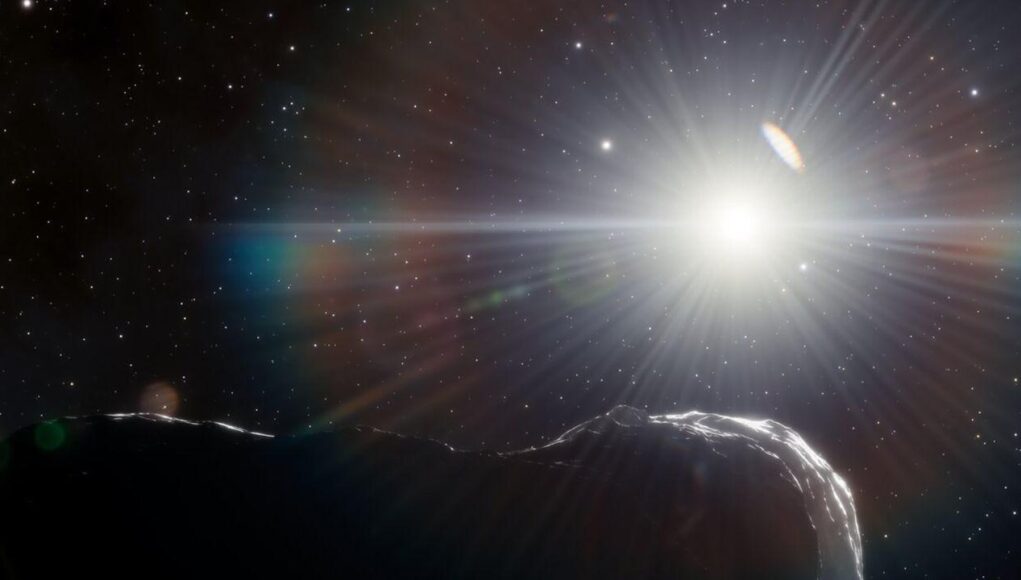In about 23 years, it may finally be time to look up.
A recently discovered asteroid over 150 feet in diameter has a chance of hitting Earth on Valentine’s Day in 2046.
Although agencies have said the asteroid, named 2023 DW, has a “very small chance” of crashing into our planet, NASA and the European Space Agency have each added it to their respective risk list.
While the thought of an asteroid hitting Earth may sound concerning, NASA says we shouldn’t be worried about 2023 DW, should it hit the planet.
Here’s what to know about the newly discovered asteroid:
Asteroid lookout: NASA’s new asteroid-hunting telescope is made to protect Earth from disaster
How big is the asteroid 2023 DW?
The asteroid has an estimated diameter of around 160 feet, according to NASA, which is about the same size as an Olympic swimming pool or the width of a football field.
The ESA said it was discovered on Feb. 26 at an observatory in San Pedro de Atacama, Chile.
What’s everyone talking about?:Sign up for our trending newsletter to get the latest news of the day
When could asteroid 2023 DW hit Earth?
The asteroids closest approach to Earth will be on Feb. 14, 2046.
Data from NASA shows the asteroid could hit Earth on that date, but it’s likely to pass Earth by more than 1.1 million miles.
“We’ve been tracking a new asteroid named 2023 DW that has a very small chance of impacting Earth in 2046. Often when new objects are first discovered, it takes several weeks of data to reduce the uncertainties and adequately predict their orbits years into the future,” NASA’s Planetary Defense Coordination Office said in a tweet.
Fireball: Asteroid hits Earth hours after being spotted, meteor turns into ‘beautiful’ fireball over Europe
What happens if asteroid 2023 DW hits Earth?
The asteroid is noticeable enough to land on NASA’s Earth impact monitoring list and the ESA’s risk list.
NASA says an asteroid like 2023 DW, which is larger than 82 feet but smaller than 3,280 feet, would “likely cause local damage to the impact area.”
However, the asteroid is ranked on the Torino Scale as level 1 threat.
The scale is a tool NASA uses to categorize potential Earth impacts, with zero being no hazard and 10 being something that can cause global catastrophe. One on the Torino Scale means 2023 DW is in the normal, or green, zone.
“A routine discovery in which a pass near the Earth is predicted that poses no unusual level of danger. Current calculations show the chance of collision is extremely unlikely with no cause for public attention or public concern,” the scale says of the green zone. “New telescopic observations very likely will lead to re-assignment to Level 0.”
Best stargazing events of 2023:How to see green comet, meteor showers and an eclipse this year
What if a catastrophic asteroid hits Earth?
Although 2023 DW doesn’t pose a great risk to Earth, NASA is continuing to work to defend the planet from any asteroid that could cause havoc.
In September, NASA crashed its Double Asteroid Redirection Test spacecraft, or DART, into an asteroid to see if it could change the trajectory of the space rock. NASA later confirmed the mission was a success, and is continuing to research how effective the method is should a massive asteroid be headed our way.








